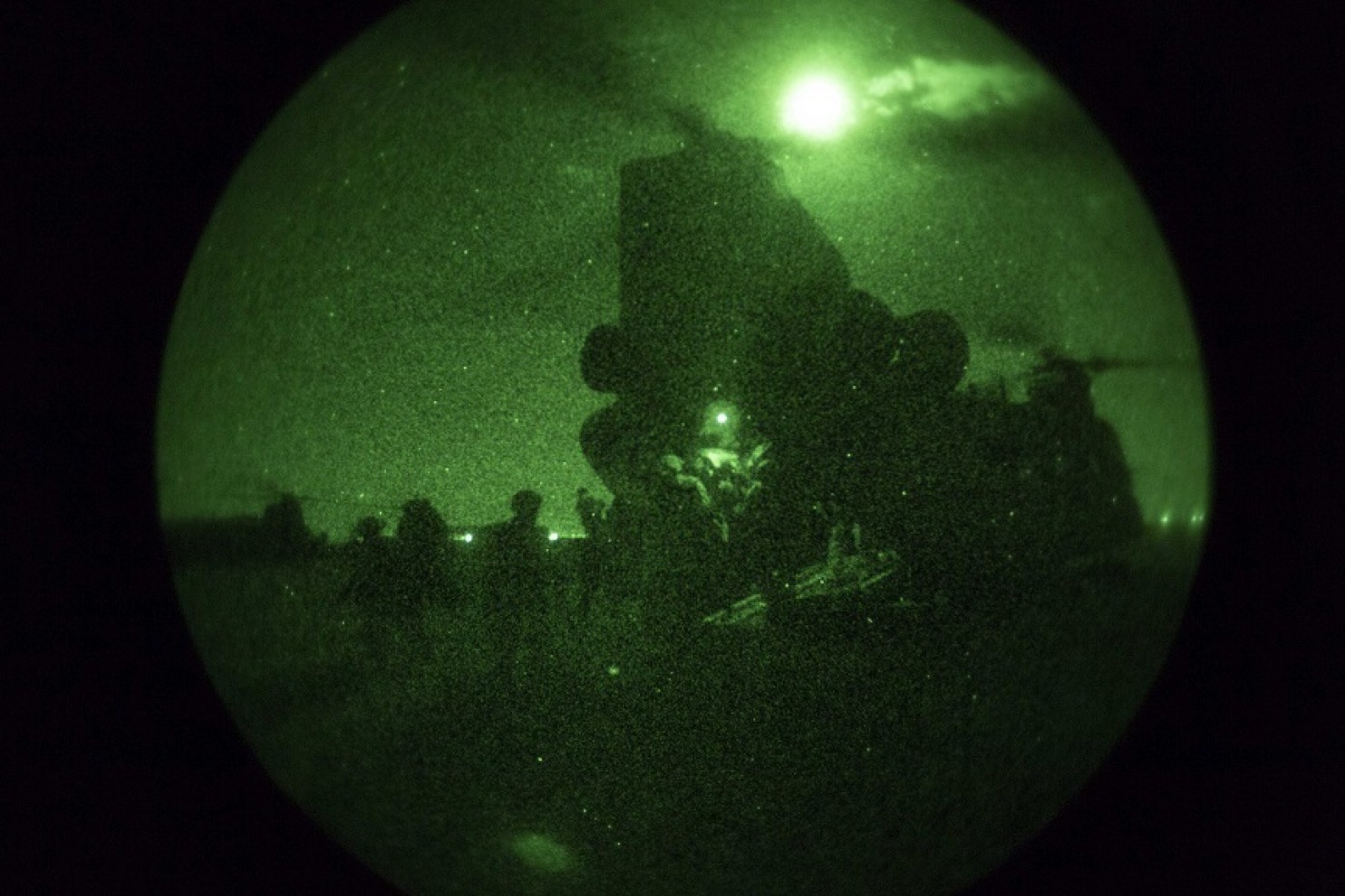U.S. approves additional troops, artillery systems and helicopter gunships for Iraq fight

The United States will send approximately 200 additional troops to Iraq and allow U.S. advisers to move closer to the front lines, the Pentagon said Monday, as the Obama administration embraces new measures to intensify its campaign against the Islamic State.
Capt. Jeff Davis, a Pentagon spokesman, said Defense Secretary Ashton B. Carter announced the expanded American role with Iraqi leaders during a visit to Baghdad, as part of a plan to help local forces overwhelm the extremist group.
“Only local, motivated forces can deliver such a defeat,” Davis told reporters at the Pentagon. “Everything we are doing now, and everything we do to accelerate the fight, is consistent with this approach.”
The new troops, who will include additional advisers and troops supporting enhanced helicopter and artillery operations, will bring the official troop number for Iraq to 4,087, from a present level of 3,870. Hundreds of troops are already in Iraq above the current number on what are deemed temporary assignments.
The new measures announced by Carter also include a decision to use U.S. Apache helicopter gunships and HIMARS rocket artillery to support Iraqi forces’ upcoming offensive to reclaim Mosul, the important city that was captured by militants almost two years ago. The Apaches, already positioned in Iraq but not currently used in combat, will allow the United States to provide close air support to the local troops as they try to push into the well-defended northern city.
Already in use around Ramadi, the HIMARS will allow for long-range artillery strikes that are as accurate as precision-guided munitions dropped from aircraft. Since the HIMARS are launched from the ground, their rockets can be fired more quickly than air attacks can be mounted, and they can be used during all weather conditions. It’s not yet clear whether the new HIMARS system will be positioned within striking range of Mosul and its surrounding suburbs. Currently, a small number of U.S. Marines are dug in near the city of Makhmour, southeast of Mosul, in support of a future offensive, but their Howitzer artillery systems are not within range of the city.
Raising the Iraqi flag in Mosul would be a symbolic victory for the government of Prime Minister Haider al-Abadi, who is grappling with a mounting political crisis, and for the White House, which is seeking to deal a decisive blow to the Islamic State before President Obama leaves office.
The decisions are the latest indication of officials’ increasingly urgent desire to make the U.S.-led campaign of airstrikes and on-the-ground training efforts, which began in 2014, more effective. While the Islamic State has lost terrain in Iraq and Syria, it remains a powerful force capable of launching offensive attacks. It has also shown its reach into the West with a series of recent attacks in Paris and Brussels.
U.S. officials say their repeated strikes on Islamic State oil and financial targets, and on several high-profile militant leaders, have already weakened the group. It’s not clear, though, whether partner forces in Iraq and Syria will prove themselves capable of dispatching the group in its strongholds of Mosul and the Syrian city of Raqqa.
Davis said that U.S. advisers, most of whom are now limited to Iraqi division headquarters when they provide their assistance, will be permitted to accompany Iraqi units down to the battalion level, putting them closer to the fight. Officials hope the move will facilitate coordination between Iraqi troops and their U.S. counterparts and provide the local forces with extra confidence, making the overall force more effective during a punishing battle in which close air support and artillery will be key to success.
But deploying Americans in lower-level units will expose those troops to greater risk. While Obama has promised that U.S. troops will not return to combat in Iraq, the expanding role for U.S. forces there makes his contention more difficult to defend. The United States has also stood up a Special Operations task force in Iraq whose mission is to launch raids against militants in both countries.
Davis said the United States would also provide up to $415 million in aid to the peshmerga, the Kurdish forces who have been battling the Islamic State in and around Iraq’s northern Kurdistan region. The Kurdish government, like Abadi’s administration in Baghdad, has been severely affected by falling global oil prices. It has been unable to pay the salaries of thousands of its fighters